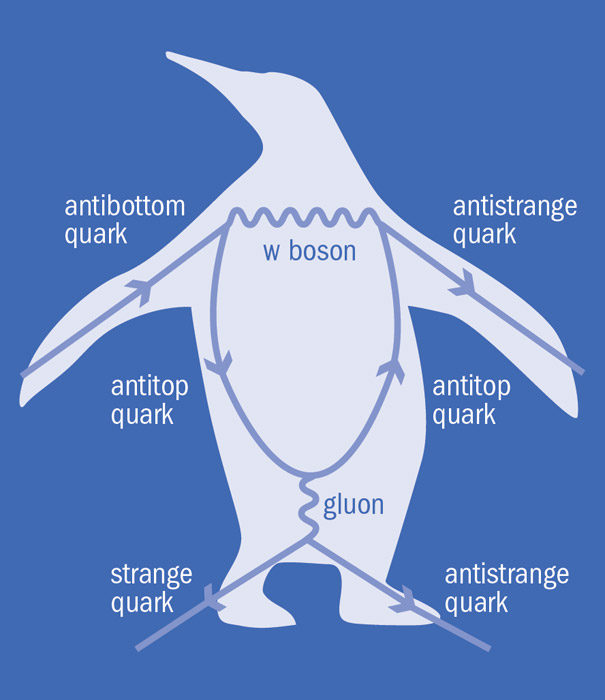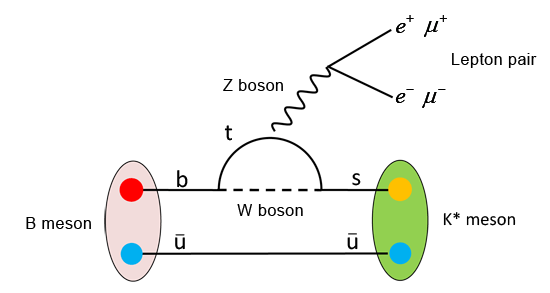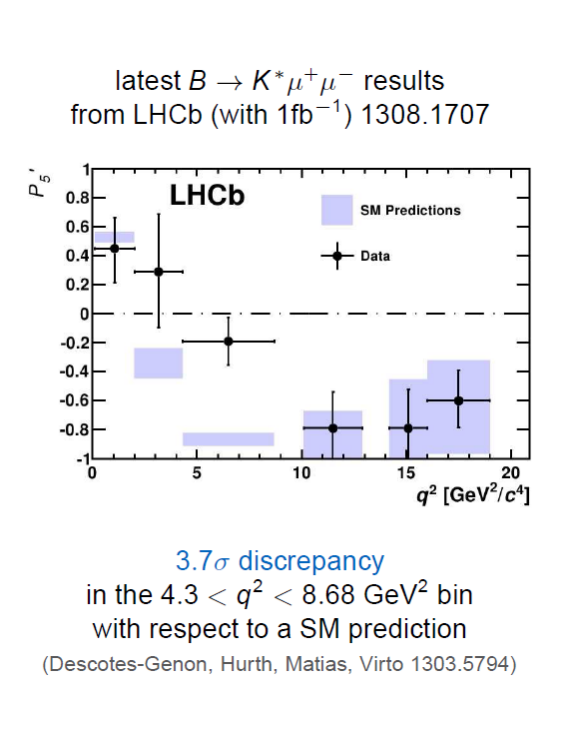The Penguin Domination
18 March 2014 | By
This week features the 2014 Moriond Electroweak conference at La Thuile, Italy. More than a 100 particle physicists gather from all around the world. Started 50 years ago, this conference is still very valued, year after year, due to the high quality of the talks. The Moriond winter conference is one of the most exciting conferences, as all the particle physics experiments present their brand new results, but it is also appealing because of the mountains and the great Italian food.

Being a particle physicist is an amazing job. In theory. But not always in practice. Understanding the fundamental laws ruling the universe is indeed exciting, but our daily work usually includes endless fights with reluctant computers, digging into the cryptic world of the C++ coding and GRID error messages, working countless hours for months or even years to come up with new ideas and new analyses to challenge the theoretical predictions, and finally opening the box of data to find out that there is actually nothing to be found out. Even if not finding anything is sometimes a scientific result worth publishing, it can be quite frustrating at times.

That's why taking a few days off from the computer and a few steps back is an absolute necessity for many of us. It's a great way to return to the original excitement, an opportunity to look at our field with fresh eyes, a rested mind, to see only the beauty behind the fights. It's also a way to meet new people, outside of a confined meeting room, in a more relaxed environment, discuss and challenge the new results on a ski-lift, elaborate new projects, and go back home with renewed inspiration and motivation.
A conference is an opportunity to broaden our views because each step of a physics analysis is so technical, many of us end up working in a tiny area of specialization. But our field is wide and we need to know about all the orthogonal paths explored by other people, with different experiments, different particles and different methods. First, to learn about them out of curiosity, but also to gain perspectives on our own work and open our minds to new ideas.
Today was the first session of the conference, about heavy flavoured particles, also known as 'B-physics'. Today was also the first ski session, during the lunch break, and the first associated sunburns. But no broken leg to report so far. B-physics is quite far from my field of expertise, and is a complex topic, both from the theoretical and the experimental side. What I know is that it is one of the first places where we found that matter and anti-matter behave slightly differently, which was the first hint on the path to understanding why our universe today is only made up of matter, although our equations tell us that matter and anti-matter must have been produced in equal quantities in the early universe. So where did all the anti-matter go?

Heavy flavour physics has taught us that particles and anti-particles have a slightly different lifetime. Today, it's also teaching us that some of the anti-particles partly break the most intuitive symmetry rules (charge-parity conservation). But antimatter breaks rules in a precisely predictable way. That's the beauty of physics. By studying all the possible behaviours and decays predicted by the Standard Model, and by looking for possible deviations, we can discover or exclude the contribution of new physics models, where additional particles could interfere.
The B-physics measurements are extremely sensitive to such new particles, especially those rare decays that are dominated by "penguin diagrams". These are complex processes that include a loop of intermediate particles that, when viewed with the right imagination, can appear as penguins1. By studying the rates of these rare decays, one can infer the contribution of even very heavy particles that would have escaped direct detection at the LHC, so far, because they are too heavy to have been produced with the 8 TeV of beam energy that has been available up until now. We still have to wait a few more months until the LHC restarts with its upgraded magnets to explore the 13 TeV energy frontier.
The summary of the B-physics session today is that pretty much everything behaves as predicted with an incredible accuracy, showing how well our Standard Model, again, describes the physics of the particles and their interactions. But tensions exist between the measurements and the predictions, for example in the Bs to K*μμ channel, as shown in the histogram. More data and theoretical explorations are needed to validate or exclude them further, but... I must admit I've never met anyone, besides physicists, who are so excited when proven wrong and almost disappointed when everything behaves as expected. Because 'wrong', for a physicist, either means there is something we did do not measure properly and could certainly be done better, or, that there is a hidden mechanism underlying, something new yet to be discovered. And that's what we live for.
1 An amusing description of penguin diagrams, from the person who coined the term, appeared in Symmetry Magazine, June 2013.




